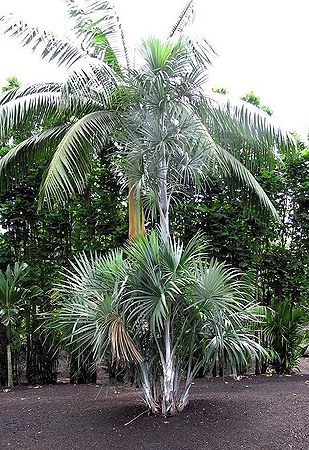Difference between revisions of "Mauritiella armata"
| Line 103: | Line 103: | ||
image:MauArm_seeds.jpg|Rare Palm Seeds.com | image:MauArm_seeds.jpg|Rare Palm Seeds.com | ||
| − | File:ma21809564832.JPG|South of the Sipaliwini Airstrip, Suriname. By Dr's. Reinoud Norde and Feddo Oldenburger. | + | File:ma21809564832.JPG|Image Text: South of the Sipaliwini Airstrip, Suriname. By Dr's. Reinoud Norde and Feddo Oldenburger. |
| − | File:ma620987065499.JPG|South of the Sipaliwini Airstrip, Suriname. By Dr's. Reinoud Norde and Feddo Oldenburger. | + | File:ma620987065499.JPG|Image Text: South of the Sipaliwini Airstrip, Suriname. By Dr's. Reinoud Norde and Feddo Oldenburger. |
| − | File:ma4793287710.JPG|South of the Sipaliwini Airstrip, Suriname. By Dr's. Reinoud Norde and Feddo Oldenburger. | + | File:ma4793287710.JPG|Image Text: South of the Sipaliwini Airstrip, Suriname. By Dr's. Reinoud Norde and Feddo Oldenburger. |
| − | File:ma185760238812.JPG|South of the Sipaliwini Airstrip, Suriname. By Dr's. Reinoud Norde and Feddo Oldenburger. | + | File:ma185760238812.JPG|Image Text: South of the Sipaliwini Airstrip, Suriname. By Dr's. Reinoud Norde and Feddo Oldenburger. |
| − | File:ma66590221890.JPG|South of the Sipaliwini Airstrip, Suriname. By Dr's. Reinoud Norde and Feddo Oldenburger. | + | File:ma66590221890.JPG|Image Text: South of the Sipaliwini Airstrip, Suriname. By Dr's. Reinoud Norde and Feddo Oldenburger. |
| − | File:ma2327098055.JPG|South of the Sipaliwini Airstrip, Suriname. By Dr's. Reinoud Norde and Feddo Oldenburger. | + | File:ma2327098055.JPG|Image Text: South of the Sipaliwini Airstrip, Suriname. By Dr's. Reinoud Norde and Feddo Oldenburger. |
</gallery></center> | </gallery></center> | ||
==External Links== | ==External Links== | ||
Revision as of 23:47, 7 January 2016
| Mauritiella (maw-reet'-ee-ehl-lah) armata (ahr-MAH-tah) | |||||||
|---|---|---|---|---|---|---|---|
 Paraíba State, Brazil. Photo by Gleno Machado. | |||||||
| Scientific Classification | |||||||
| |||||||
| Synonyms | |||||||
|
| |||||||
| Native Continent | |||||||
|
| |||||||
| Morphology | |||||||
| |||||||
| Culture | |||||||
|
| |||||||
| Survivability index | |||||||
|
| |||||||
| Common names | |||||||
|
| |||||||
Contents
Habitat and Distribution
Bolivia, Brazil North, Brazil Northeast, Brazil Southeast, Brazil West-Central, Colombia, Ecuador, Guyana, Peru, Suriname, Venezuela. Widespread in the Amazon region and adjacent areas, from Venezuela to Bolivia, usually at low elevations. In Ecuador it occurs here and there along black water streams and lakes.Description
Canopy or subcanopy palm. Stems clustered, to 20 m tall, and 15-25 cm in diameter, at least on the lower part armed with short conical root spines. Leaves split into about 20 one-ribbed segments, these below with a black, web-like indument. Fruits about 3 cm long, covered with reddish brown scales. Editing by edric. (Borchsenius, F. 1998)/Palmweb. Editing by edric.
Culture
The main requirement is water, and lots of it. It also likes full sun, and warmth in winter. Once they get established, however, they do appear to be very vigorous growers. Cold Hardiness Zone: 11a
Comments and Curiosities
This is a dioecious genus.
Uses: Fruit, mesocarp. The fruit of Mauritiella peruviana, known locally as "aguajillo" because it resembles a miniature aguaje, is also edible and used to prepare a type of aguajina. People use their teeth to peel the skin, before eating the lime yellow pulp, that surrounds the single reddish brown seed. In markets, the fruits are often sold from bowls full of water so that the pulp is soft and more palatable.
Similar to the fantastic Mauritia flexuosa, this clustering species is a slender, garden-sized version that will usually reach a height of about 10 m (33 ft.). Its beautiful, fan-shaped leaves carry up to 120 segments that are bluish waxy below. It is a typical palm of the greater Amazon region where it is widespread, and is common in a variety of habitats, from the steamy, tropical lowlands up to the cool Guyana Highlands at 1400 m (4600 ft.) a.s.l. Among its closest relatives, Mauritia, Mauritiella, and Lepidocaryum, it is the only one that is really tolerant of cooler, subtropical winters, even though it does not tolerate any frost. Mauritiella armata is a very fast grower and does well in the tropical and subtropical garden. When young, it also makes a stunning pot plant that could even be commercially interesting. All parts of the young plant are covered with a thick, white or pale blue, waxy bloom. (RPS.com)
- IMAGE GALLERY
External Links
References
Phonetic spelling of Latin names by edric.
Special thanks to Geoff Stein, (Palmbob) for his hundreds of photos.
Special thanks to Palmweb.org, Dr. John Dransfield, Dr. Bill Baker & team, for their volumes of information and photos.
Glossary of Palm Terms; Based on the glossary in Dransfield, J., N.W. Uhl, C.B. Asmussen-Lange, W.J. Baker, M.M. Harley & C.E. Lewis. 2008. Genera Palmarum - Evolution and Classification of the Palms. Royal Botanic Gardens, Kew. All images copyright of the artists and photographers (see images for credits).
Borchsenius, F. 1998. Manual to the palms of Ecuador. AAU Reports 37. Department of Systematic Botany, University of Aarhus, Denmark in collaboration with Pontificia Universidad Catalica del Ecuador.
Many Special Thanks to Ed Vaile for his long hours of tireless editing and numerous contributions.









































































